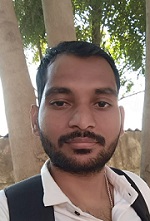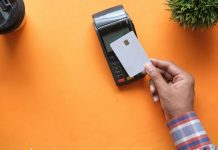The popularity of iPhones reveals the popularity of iOS apps. While the initial cost of iPhone app architecture remains roughly the same, it’s important to know the best way to build an iPhone app in 2022.
When discussing how to build an app, you first have to decide what type of app to focus on – Android or iOS. Developing applications for two different platforms at the same time may require a lot of effort and funding. Of course, there are cross-platform options that allow you to create a universal application for both operating systems, but they do not bring the native stability and feel of a platform-specific application.
Stage 1 – Why You Want to Build Your iPhone App
Prior to jumping into the advancement interaction, you really want to frame business regions where you feel like you could convey superior quality assistance or further develop execution measurements. The picked guide will assist you with characterizing the vital elements and UI. This progression is fundamental for setting the correct course for your coder and configuration groups that will deal with rejuvenating the application.
● Consider the Features That Will Help Solve Problem
Whenever you’ve recognized the regions for development inside your business, you can begin assembling a list of capabilities that the future application needs to have. We will take a gander at certain models for a few well known ventures underneath, yet a portion of the standard functionalities that most iOS applications will require are pop-up messages, in-application buys, document uploaders, essential informing, a spring up menu with activity choices, and profile altering.
Step 2: Conduct a Competition Survey

The app is not in a vacuum. The App Store is similar to other platforms. Place the best performing companies at the top of the rankings and the least successful competitors at the bottom. And even if you’re building a small niche app that’s not meant to be widespread, it’s very useful to check out similar apps in a taxi app development company with the same business. Use their expertise to decide what to do, what to do, monitor best practices, and identify factors that stand in the way of potential users.
● Try the app yourself
To find competing apps, use the main brand and purpose search box in the App Store, browse categories, or just use Google. Download different apps and try to analyze what you like about them, what you think you can improve and how easy and useful they are in general. See how the application is structured, the logic of the subsequent screens and its appeal for regular users. Note any inconsistencies and write down inspiring ideas.
● View customer reviews
After you’ve tried the apps yourself, make up your own mind about what offers exist in your category. To see if you’re on your way to discovering the key factors that make these apps profitable, add more metrics to your search – check out the App Store reviews. Find things that people like and watch for complaints. Here’s an example of a review to learn: outlines the positives and negatives of the popular photo editing app, with more suggestions for improvement.
Step 3 – Check out potential users of mobile apps
Your research can be enlightening, but ultimately, it is the user’s opinion that determines the success of your application. By testing the market and gathering initial customer feedback, you can adjust the app development cycle and align its direction with current demand. There are a few things to keep in mind when setting up a poll.
● Keep it simple
Do not ask too many questions and keep your completion time to less than 5 minutes. Otherwise, it will be difficult to get enough answers. Add images to choose from or offer options written in plain, accessible language.
● Have a specific goal in mind
Don’t know if you need to add a special feature? Or do you want to know if an app is something that can be useful to your customers? Here are some questions to help reduce core uncertainty.
● Add neutral and other options
If none of the answers to a specific question are appropriate, you can lose users or collect invisible feedback. Add the option “None of the above” or “I don’t know”. For multiple choice voting, we recommend adding a text field for alternative answers.
● Select the correct target group
To create a survey related to the app development process, you need to distribute it to potential and existing customers, preferably customers who have an iOS product.
Step 4: Plan your schedule

Survey statistics, competitor search results, and a preliminary list of selected features will take you through the app development planning phase. Separate primary and assistive technologies from your next to-do list and create a wireframe for iPhone development and design teams.
● Main and secondary characteristics
Find the main features of the iOS app and configure the MVP version. Building a self-sufficient but performance-limited beta can save you time and money and see how your program behaves in real market conditions. In terms of development and design, we want to prioritize key features. Make it more accessible and visible in the app’s mobile interface.
● Create a wireframe for your new app
The grid framework is a detailed digital graphic of the application that describes all the elements of the user interface, their relative positions, and the logic and flow of subsequent user actions. Now it’s time to decide what features should be placed on the first screen, where all the buttons will go, what fields and windows will be required, and how many different scenarios will be available to users. At this point, consider consulting a UX designer to make sure the app is easy to use and intuitive.
Step 5: Build the app
As mentioned above, there are three general approaches depending on the effort, budget, and planning required to develop an iOS app. Each has its pros and cons and can be used together. For example, develop the backend part of your app in-house and outsource a designer for the frontend, or hire a freelancer with a no-code builder and add some tweaks to make it more reasonable for your business.
● Use the app builder
Codeless Builder is an easy and affordable way to build apps with a standard feature set and simple concepts. These services usually come with a set of pre-built iOS code templates and customizable design elements that you can mix and match to create the look and feel you want. This approach doesn’t work for complex apps and doesn’t allow for deep customization, but it’s worth considering for small business owners with little or no coding experience. your own application code.
Step 6: verify your app
Once the build phase is complete, you should have a fully functional prototype (ipa archive with multiple folders) which should be extensively tested before submitting it for review. You need to make sure that everything works as expected and that as the number of users increases, your app will not crash. Tests can also highlight design flaws and gaps in the user experience that you want to improve before publishing.
● Try using the emulator in XCode
Among different devices, Xcode gives an iPhone emulator to run essential virtual tests. You can choose one of the gadgets from the rundown in the Xcode project window and perceive how your application deals with a particular layout family. Now, you can likewise run tests on any iOS gadgets you own, accepting you have enlisted an improvement endorsement with Apple to empower the test system. For a more nitty gritty aide on the best way to do that, look at the “Running Your App in the Simulator or on a Device” segment of the authority documentation.
● Test the App Internally
To run further testing, you really want Apple’s product called TestFlight. Transfer the beta form to App Store Connect, a stage to oversee and submit new applications, and you will actually want to welcome your colleagues (up to 100 of them) to test the application on their gadgets. This present time’s the opportunity to zero in less on the bugs, as you’ve no doubt gotten a large portion of them during the past test system stage, and assess the client experience, usefulness, and cross-gadget execution of the application. Test your application remotely.
Step 7: Publish your app
Now all you have to do before submitting your app is to collect all the information needed to list it in the App Store. You must select your app’s primary and secondary categories to see them in related collections and search results. This is also a good time to think about paid plans, whether the app is free, available on a subscription, or offers free exclusive features in a paid premium version.
● Create an App Store product page
A product page is a presentation of an app that follows a specific structure and consists of standard elements, such as a name and icon, short captions that summarize a detailed description of the app’s nature and features and purpose, preview videos, and screenshots. Keywords for an effective store search function. Details of each required element are provided below.
● Choose the right name for your app
As with any product, the name is very important. The name should be understandable, relevant, unique, and memorable. Fortunately, developing an app isn’t difficult because you’re making it as an extension of your existing business. Most brands use the same spelling and structure as their official names. For clarity, or if you have multiple branches of your business that cover completely different industries, it’s a good idea to add goal-related keywords. In this way, users can easily identify the application they would like for taxi application development.
Step 8 – Advertise your iPhone app

Your efforts should not end after the release of a new application. If you do not raise awareness, all your resources and budget may be wasted. You do not have to rely on Apple’s built-in algorithms to get the job done, as it is unlikely that your newly released app will be at the top of the App Store table. You can experiment with different marketing strategies to promote your program, for example. B. By offering special program discounts or using social media or public relations channels for advertising and monetary cooperation.
● Share with online and offline audiences
If you followed the steps outlined above, chances are that segments of your current audience were already familiar with your app development plans. They may have taken a survey or been one of the few selected beta testers. For other customer segments, you need to find the right channel for your business to share news with.
● Request an app store review
Strong ratings and compliments for your current customers’ App Store listings can entice new users to download your app as well. Ratings can also influence your position in primary and secondary categories, which can help you attract more customers from search results. Detailed reviews that give you an overview of your app’s usability and performance add value to potential users, allowing you to ask your customers to be more specific and encourage them to leave reviews with compliments or discounts.
● conclusion
Creating an app is not an easy process as it requires a lot of research beforehand, ability to adapt quickly to process changes, willingness to stay in touch with your target audience and sometimes your needs and wants. Keep ahead of your business. , target. Creating an iOS app and organizing your concepts will fill your to-do list for the next few months with development meetings, strategic planning sessions, countless interface design decisions, and time-consuming guidelines to follow. study.
Author,Bio
Name: Jogender
Designation: SEO Executive
 Jogender serves as an SEO executive at a web develpment company where you can also hire react js developer and I personally handle all work related to seo, smo, and email marketing works.
Jogender serves as an SEO executive at a web develpment company where you can also hire react js developer and I personally handle all work related to seo, smo, and email marketing works.








